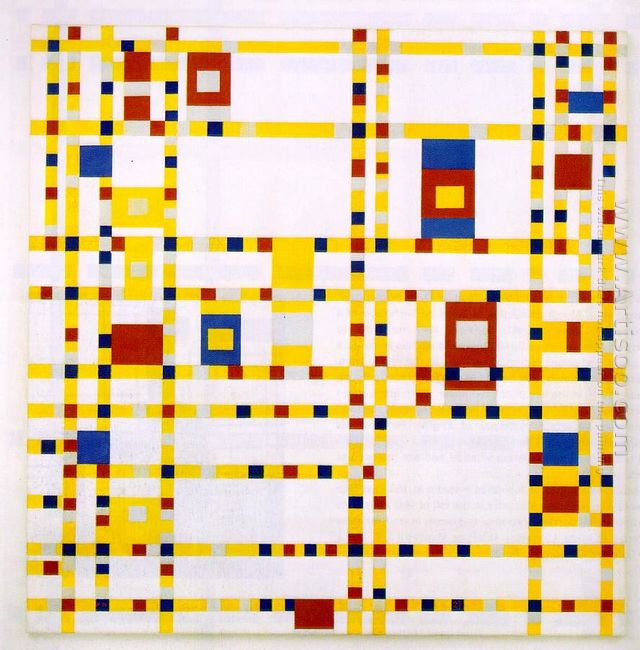In 1930, Piet Mondrian left Paris and arrived in London. Since World War II war spread, he fled to the United States in 1940 and spent the last four years in his whole life journey in New York. New York was a modern metropolis with its unique prosperous to attract Mondrian: the neat rigorous street layout, soaring skyscrapers, energetic dance and jazz band, as well as the flashing light at night not only interlinked with painting, but also emitted an unknown new spirit of hitherto.
Therefore, his works began to change. The painting style which had been used for more than 20 years was broken. Black grid and large blocks of color disappeared, replaced by the color line consisting of numerous small chunks and small jumping chunks which were happy, bright, full of vigor and sense of music.
Broadway Boogie Woogie was an important work of Mandarin in New York, which was also the last one in his whole life. It clearly reflected a new breath of modern city. They were still the direct lines, but not the earnest black lines. Instead, they were the lively jumping color lines composed of colorful rectangular in small length to control the painting. They were still the original colors, but not limited by the black lines. They were dominated by the bright yellow, red, blue and mixed together to form the colorful lines dotted with red, yellow and blue block and create a rhythm transform and frequency of vibration. Look, this format was more lively and beautiful than any previous works. It was full of the rhythm of the jazz, as if the office buildings and eternal light in the streets at night flashed. This was the last new development of Mondrian’s art career. In February 1944, he died of the severe pneumonia.
The works of Mondrian’s life clearly demonstrated his efforts and achievements from the realism to geometric abstraction. This was a sophisticated long journey with clear goals. He was so unremitting to use his new modeling principles, that his name had been associated with Neo-Plasticism.






